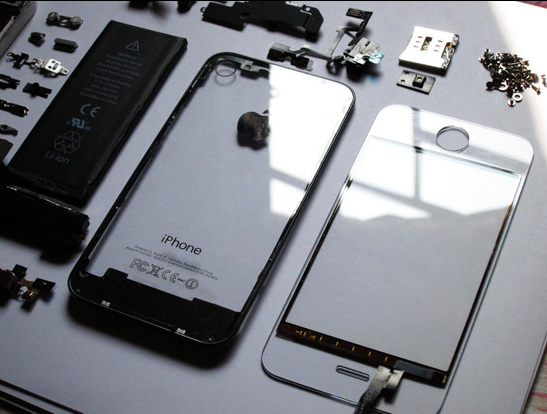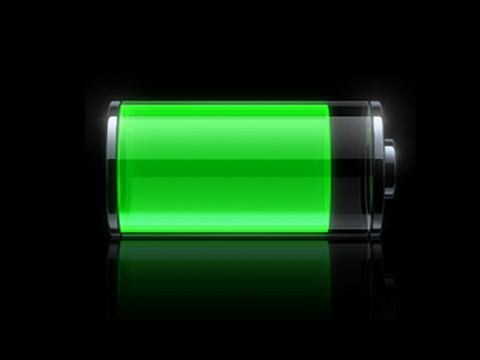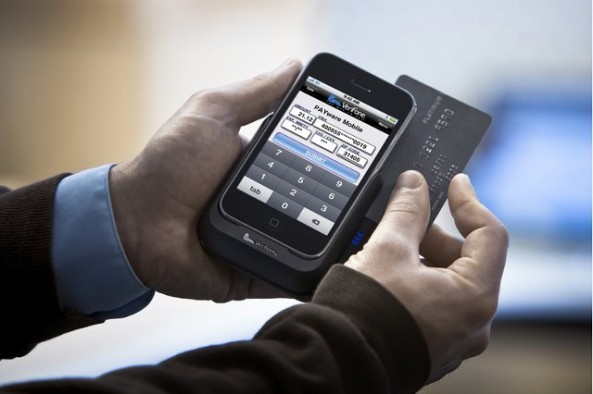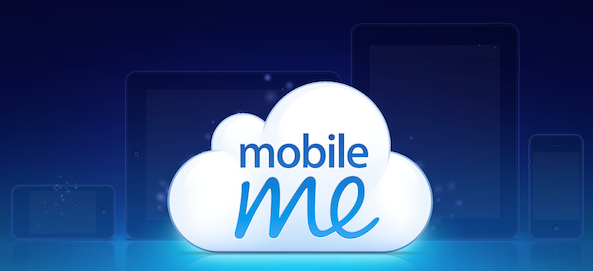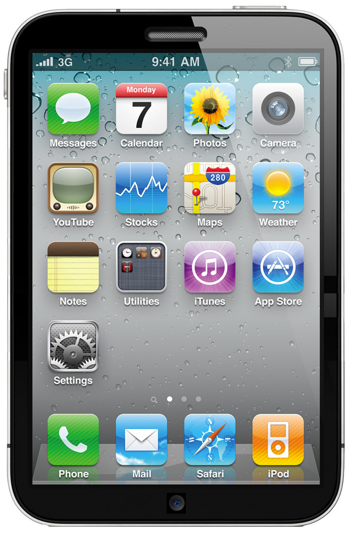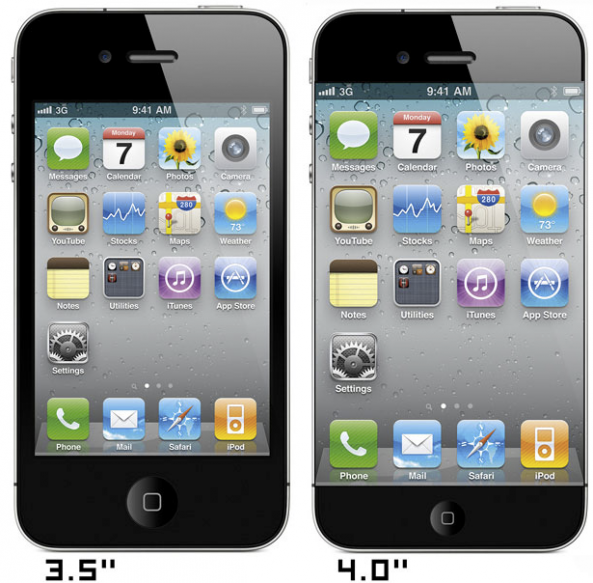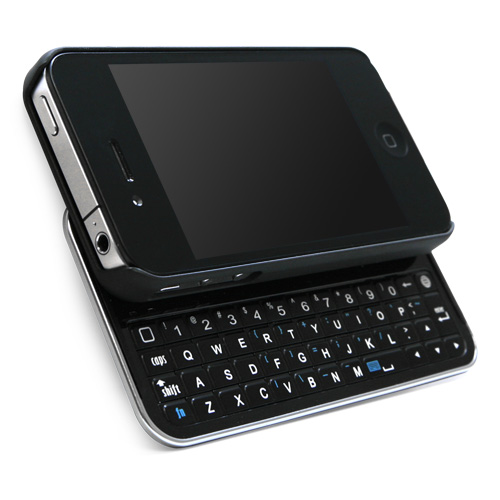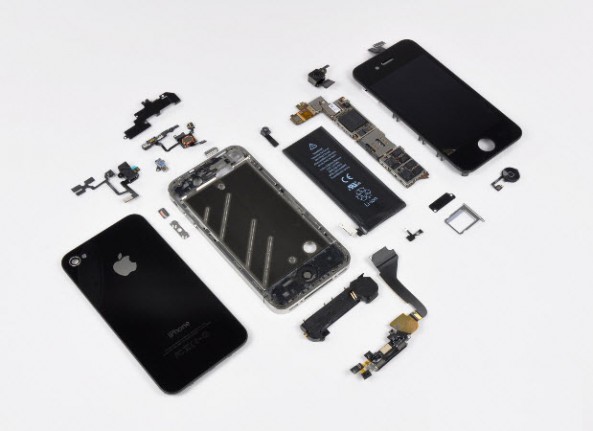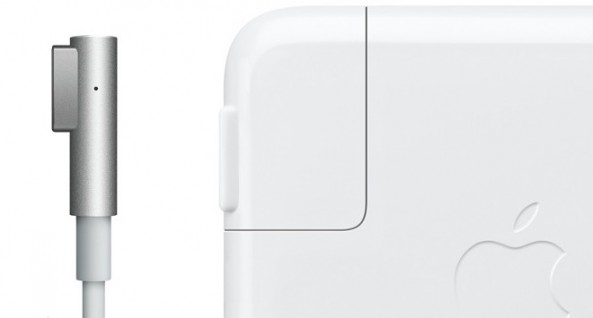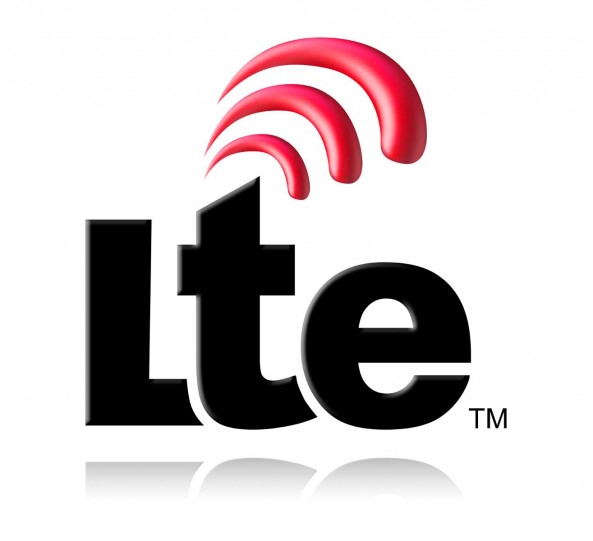Posted by admin in Monday, February 21st 2011 under: iphone news Tags: App Store, AT&T, iPad, iphone, iphone 4, iPod touch, iTunes link, Verizon iPhone, Verizon iPhone 4 edit
One prominent App Store developer has found the launch of the Verizon iPhone earlier this month had no discernible effect on software sales, while other events like launches and the holidays caused “huge spikes,” suggesting new customers already owned an iPhone or iPod touch.Marco Arment of the popular Instapaper application (iTunes link) for iPhone and iPad, noted this week that rankings for his software are usually relatively steady, but sales can vary — particularly when an iPhone-related event occurs. Based on this, he assumes that sales of Instapaper could indicate overall App Store trends.
“The results are fairly obvious: I see huge spikes whenever there’s a new iPhone, iPod Touch or iPad released, whenever they become available in a major new country, or whenever there’s a major reason for people to buy a lot of them (like the holidays),” Arment wrote.
Since the Verizon iPhone 4 launched on Feb. 10, Arment’s application has seen no major change in sales. He noted that his ranks on the App Store have been nearly constant, as have overall sales.
Based on his assumption that sales of his application could indicate overall iPhone trends, Arment offers three potential theories on launch sales of the Verizon iPhone 4. First, he says it’s possible that very few Verizon iPhones have been sold, a suggestion he calls unlikely. Second, he said it’s possible that Verizon iPhone owners aren’t buying many applications, which he also considers unlikely.
Finally, Arment suggested that most Verizon iPhones have been sold to existing iPhone or iPod touch users. In this scenario, customers getting the Verizon iPhone could already own most or all of the App Store software they would be interested in buying.

Sales of Instapaper have not seen a boost from the Verizon iPhone launch.
“I think that, while the Verizon iPhone’s sales are going to be strong overall, it’s going to be at a far more gradual rate than people like me had initially assumed,” he wrote.
Though Apple and Verizon have not made an announcement on initial iPhone 4 sales, one rumor last week suggested the two companies were disappointed with initial uptake. However, a Verizon spokesperson contradicted that report, and said the company was pleased with initial sales.
Analysts on Wall Street said they expected sales of the new Verizon iPhone to sell about a million in the first week. The launch is expected to have been smaller than ones at rival carrier AT&T because the iPhone 4 first launched last June, and was essentially the same phone that debuted on Verizon’s network this month.
iPhone:Top 10 iPhone News You Might Have Missed This Week
Posted by admin in Monday, February 21st 2011 under: iphone news Tags: AT&T, Cydia, iphone, iphone 5, Verizon edit
This is a summary of the most popular articles published on iDB this past week. Please make sure to spread our iPhone wisdom by sharing our posts on Twitter and Facebook.- Sn0wBreeze jailbreak for iPhone 4.2.1
- How to update Cydia in the background
- How to improve the iPhone AutoCorrect
- An iPhone 5 with a slideout keyboard?
- Data speed: Verizon vs AT&T
- How to fix iBooks after jailbreaking
- Verizon iPhone unlocked
- Enable unicode symbols with Vmoji
- iPhone Nano caught on TV
- Bring your iPhone 2G/3G to 4.2 with WhiteD00r
- Please Apple, don’t make a cheap iPhone
iPhone: Dear Apple, Please Don’t Make a Cheap iPhone
Posted by admin in Monday, February 21st 2011 under: iphone news Tags: Apple, Apple TV 2, iPad, iphone, iPhone nano, MacBook Air, smartphone edit

Last week a rumor started spreading around the interwebs saying that Apple was to unveil an iPhone Nano. That wasn’t a new rumor as we had already heard that before but the fact that the news came from the WSJ gave it street credentials.
Then the rumor was debunked by the NY Times who claimed that Apple wasn’t looking into making an iPhone Nano, but was looking into making a cheaper iPhone. When I first read about that, I thought I was in my worst nightmare: a world of cheap Apple products…
Historically, and for good reasons, Apple has been perceived as a company that makes expensive products. A basic Mac will set you back $1,000 while a basic PC will only cost you $500. I can’t count how many times I heard “I’m not rich enough to buy a Mac”. Heck, I even said that myself when I was broke.
Apple never was after market shares. They didn’t want to sell zillions of their products. Apple was all about margins and profitability. They’d rather sell a computer for $1,500 and make $600 from it than sell 10 computers at $800 and only make $60 from each one of them.
When the first iPhone came out, it sold for $600. While it wasn’t unheard of to see a smartphone selling for that price, it was unheard of to see such a priced smartphone selling this many units so rapidly. I don’t have hard data on this, but I believe this was a time where Apple was the most profitable.
When the iPad came out last year, the entry model sold for $499. While not cheap per say, it is very inexpensive compared to what it should be priced at. Look at other tablets around. None of them come at a similar or lower price, offering nothing close to what the iPad can provide. Apple priced it so low so it would flood the market and get a gigantic lead on anything Android. It succeeded.
Late last year came the Apple TV 2. A smaller and much cheaper model than its predecessor. Selling at $99, you could tell this was just $99. I remember opening the cheap box and finding a cheap product in there. You could tell Apple hadn’t spent much on packaging. The most shocking thing to me still is how the battery compartment cover of the remote is too small and kinda floats around. The Apple TV 2 wasn’t inexpensive. It was cheap!
But hey, you get what you pay for, right?
The latest noticeable price cut on Apple’s product line is of course the MacBook Air, which used to sell at $1,800 and now starts at only $999. Steve Jobs who once called netbooks “cheap laptops” had just started selling his very own cheap laptop. The reviews came in. As usual, the Macheads welcomed the new MacBook Air as new messiah, while the rest of the tech land gave it good but not amazing reviews.
Over the past 2-3 years, Apple has constantly tried to bring the prices down and it seems their strategy now is to not go for the margins, but to go after market shares. They want to seriously compete with Microsoft, RIM, Nokia, and of course Google. The only way to do that is to lower prices.
But don’t get fooled: when prices go down, quality goes down!
Just like everybody else, I like nice things. I don’t define myself according to what I own, but I like driving a nice car, having nice clothes on my back, and… I like having a kickass phone! But what happens when this phone becomes so cheap that everybody can afford it? Well, everybody buys it, and the once extraordinary phone becomes ordinary, lacking special distinction.
Ordinary is boring, and while ordinary sells, it doesn’t make money. It just creates cash flow.
As a recovering PC user who was slowly introduced to Apple’s world over the past 4 years, I have come to really appreciate, respect and love their products, but most importantly the company behind the products. I don’t wear a fanboy blindfold and while other Mac bloggers praise the company, I often criticize Apple and try to decrypt what, why, and how they do things.
If I had to make an analogy to the car industry, I’d say Apple is like the Audi of car makers. Beautiful, elegant, powerful, simple, clean, but not cheap. That’s what you get right now when you buy an Apple product. You get a beautiful, elegant, powerful, simple, clean product for which you paid a hefty price.
I’m worried that if Apple enters a pricing war with other tech giants, it won’t be able to keep its shine. It will lose all of its appeal. They will not sell products everybody dreams of owning, but they will sell products that everybody can easily get access too.
I have a Masters in Advertising, and wrote a thesis titled “the importance to be a brand”. So yes, I do have a thing for brands. I find them fascinating, and Apple more than any other brand. I just don’t want to see Apple becoming the next Nokia, going from being a glowy company to becoming another soulless corporation.
I want to own an iPhone that makes me feel like I’m driving the Audi S5. I want a phone that makes me feel like I’m part of something. A phone that makes me feel different. A $100 iPhone will not do any of that.
Apple Planning to Improve Battery Life By Increasing Cell Density
Posted by admin in Tuesday, February 22nd 2011 under: iphone news Tags: Apple, Increasing Energy Density in Rechargeable Lithium Battery Cells, iphone 4, iPhone 4′s battery, iPhones edit

With newer, more powerful dual and quad-core processors being introduced, these processors require more and more energy to operate. Apple realizes this and is looking into possible resolutions for better battery life while maintaining the same slim and sleek profile the iPhone 4 currently has.
Cupertino has filed a new patent with the U.S. Patent and Trademark Office titled “Increasing Energy Density in Rechargeable Lithium Battery Cells,” which does just that…
The patent filing explains how a battery’s grvimetric and volumetric energy density would be improved using a “multi-step-constant-current constant-voltage (CC-CV) charging technique”. CC-CV involves charging at a higher initial constant current until the battery is almost charged, then charging at a constant voltage until the charge current drops and the battery is fully charged. While the density of the power capacity would be increased, the size of the battery, as well as its maximum charging time and minimum life cycle, would remain the same.
Basically, in English, this means that Apple is working on a new way to squeeze more power into lithium batteries without increasing the battery size, or affecting the charging time.
Although I have no problem with the current iPhone 4 battery life (which usually lasts me through the day on a full charge), I wouldn’t mind some extra juice to carry on to the next day. Not to mention, this would also allow Apple to include more features in future iPhones’ as the current iPhone 4′s battery takes up a chunk of space. Maybe a fingerprint reader?
What do you think?
iPhone: WhiteD00r Brings iOS 4.2 To iPhone 2G/3G And iPod Touch 1G/2G
Posted by admin in Tuesday, February 22nd 2011 under: iphone news Tags: Apple, iDevice, iOS 3.1.3, iOS 4.0, iOS 4.2.1, iOS4, iphone, iPhone 2G, iphone 3g, iPod Touch 1G, OS 3.1.3, WhiteD00r edit

As many of you know, with the release of iOS 4.0 Apple discontinued support for the iPhone 2G as well as the iPod Touch 1G. This left iPhone 2G and iPod Touch 1G stuck on iOS 3.1.3 for life. Furthermore, while Apple did end up upgrading the iPhone 3G (which has the same amount of RAM/processor as the iPhone 2G), 3G owners experienced a great deal of problems after updating to 4.0. The OS was incredibly slow and was barely usable.
After various reports and angry iPhone 3G users, Apple began to look into the issue and stated the issues would be resolved in iOS 4.2.1. When iOS 4.2.1 came around, performance had been improved on the iPhone 3G, but it was still quite slow. Most users decided to downgrade/remain on iOS 3.1.3.
Enter WhiteD00r (no pun intended). The WhiteD00r project had been released in July of 2010 to provide a stable port of iOS4 while basing it off the 3.1.3 firmware. Basically, you were running a modded version of OS 3.1.3 that looked and performed exactly like iOS4. The folks behind the WhiteD00r project have recently updated the custom firmware file adding in many performance tweaks. They’ve done some really nice work!
Check out this comparison video they’ve uploaded comparing an iPhone 3G running the latest version of WhiteD00r vs stock iOS 4.2.1:
To find out more about the WhiteD00r project, including instructions on how to install it, check out their site here.
If you’re running WhiteD00r on your iDevice, be sure to let us know your thoughts in the comments!
iPhone: Geohot Asks For Support In Fighting Sony Lawsuit

George Hotz, or “Geohot,” is a pioneer in the jailbreak community. He has been the mastermind behind many jailbreak projects, including LimeRa1n and BlackSn0w.
Geohot recently hacked Sony’s Playstation 3 and essentially created the ability to “jailbreak” Sony’s popular console. Even though it is legal to jailbreak the iPhone, it isn’t legal to do the same to a Sony product. Sony took action and filed a lawsuit against Geohot on the basis that what he did “encourages piracy” on their platform.
Needless to say, Geohot is pissed. He is calling on the community and the media to help him in his legal fight against Sony…
About a month ago, Geohot appeared on G4′s “Attack of Show” to talk about his issue with Sony. Besides his rap video, he’s been pretty quiet since then.
Now he is calling for financial and moral support in his legal battle with Sony,
“Media, I need your help. This is the first time I have ever asked. Please, if you support this cause, help me out and spread the word. I want, by the time this goes to trial, to have Sony facing some of the hardest hitting lawyers in the business. Together, we can help fix the system.”Geohot is asking for financial donations through PayPal to help fund his legal fees in the upcoming trial.
This is what he had to say about Sony,
“Sony is lame, and is suing me for hacking MY OWN PS3. Help me own them in courtGeohot also wants to make sure that you understand the reason he is asking for help,
Sony are bullies
Sony doesn’t care if what you did was legal, if they don’t like it, they sue. Sony tried to sue a guy for getting his AIBO to do non Sony approved tricks, making it apparent that they don’t really care about piracy, they care about control. In (Sony v Bleem), Bleem was the winner on all counts, but the high cost of a legal defense shut them down. Fortunately, that suit helped set precedent on the legality of emulators. I would hate to lose this case due to resource starvation, and with the support of the masses, I won’t. Lets turn the bully back on itself. This case has the ability to set a huge precedent for consoles and all closed systems to come. The other two should be begging Sony to back off.
Sony sued the wrong guy
I am an advocate against mass piracy, do not distribute anyone’s copyrighted work but my own, do not take crap lying down, and am even pro DRM in a sense. For example, I believe Apple has every right to lock down their iPhone in the factory as much as they want, but once it’s paid for and mine, I have the right to unlock it, smash it, jailbreak it, look at it, and hack on it. Fortunately, the courts agree with me on this point.
My PS3 goal has been to provide users a legitimate path to homebrew, which by the standards of all previous cases (or, in reverse), is 100% legal. Sony does not even try to allege piracy or copyright infringement in this case, they allege I did things like play “super mario world, an unauthorized game” on MY PS3. And access MY PS3 in an unauthorized way. Who are they to authorize what I do with my taxed and paid for property?
fail0verflow’s goal was even nobler than mine. They wanted to give you back a feature Sony illegally stole, Linux on your PS3. It’s shameful on Sony’s part that they are being sued at all. If you have a problem with pirates, sue them, don’t sue people who point out your shortcomings.”
“Why should I care about your personal legal troubles?You can continue reading what Geohot has to say about this issue, and make donations, on his website.
You shouldn’t. For example, if I was taken to court for sex crimes in Sweden, I would never ask for donations. But this case isn’t about me. Clearly I am not being sued because of something I have that Sony wants, I am being sued in order to send a message that Sony is not to be messed with. But if I (and all codefendants likewise) actually win this, we have the power to send a much stronger message back. That consumers have rights, and we aren’t afraid to stand up for them.”
Geohot is also asking people to join him in “Operation Boycott Sony.” He posted this image on his blog, “Geohot Got Sued,”

We at iDB fully support Geohot’s cause with this Sony battle. We hope he comes comes out victorious in the court room, and that he can continue with his amazing exploits on both the iPhone and other platforms.
If you can’t make a financial contribution for Geohot’s legal fees, make sure to at least spread the word.
What do you think about Geohot’s problem? Do you believe that Sony is wrong in responding the way that they did? Let us know if you plan on participating in “Operation Boycott Sony.”
iPhone: ‘MyVolume’ Allows You to Fine Tune Your iPhone’s Volume Controls
Posted by admin in Tuesday, February 22nd 2011 under: iphone news Tags: Apple, Cydia, iphone, iPhone’s sound, jailbreak, jailbroken iPhones, MyVolume edit
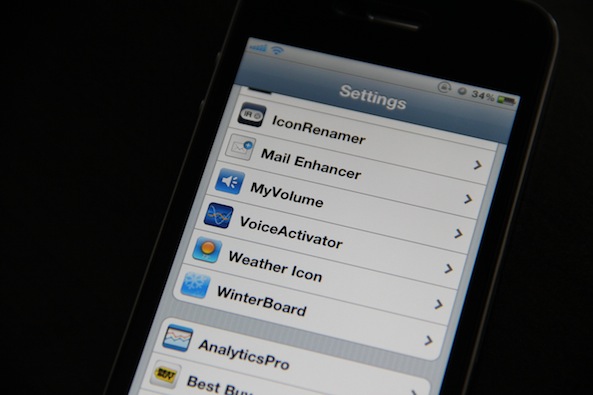
If you’re serious about customizing your iPhone’s sound, there’s likely no better candidate to meet your needs than MyVolume.
This is a jailbreak tweak for serious customizers only; casuals need not apply.
That’s because MyVolume allows you to modify nearly every function of your iPhone’s volume controls, almost to a fanatic level…

It’s funny because you don’t really realize how tight Apple’s controls are, until a tweak like this comes around and opens a whole new realm of possibilities.
MyVolume allows you to add haptic feedback to your volume adjustments, toggle the heads up display on and off, and silent annoying apps altogether, regardless of your volume settings.
The developer has even ventured as far as to allow you to make incremental adjustments on the amount of volume applied when depressing the + or – volume keys.
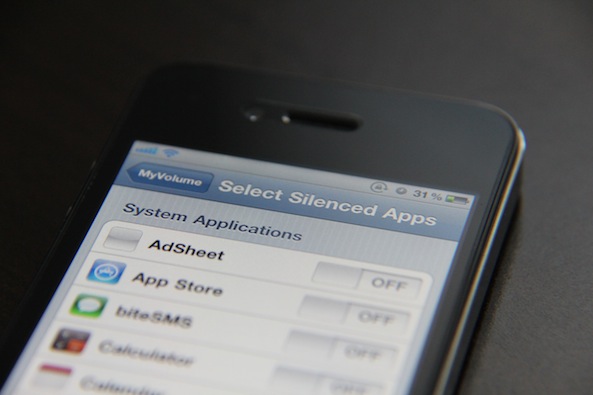
Even with all of that, I think I’ve touched on about fifty percent of the tweak’s capabilities.
If you’re looking for something that’s going to bring a lot of varied functions to the table, MyVolume isn’t going to be your cup of tea.
On the other hand, if you’re looking for a tweak that sticks to one thing, and does an incredibly good job of doing said thing, you’d be hard pressed to find another that compares.
MyVolume is available for jailbroken iPhones, and can be purchased on Cydia for $1.99.
What are your thoughts?
 Posted in
Posted in  Tags:
Tags: 



